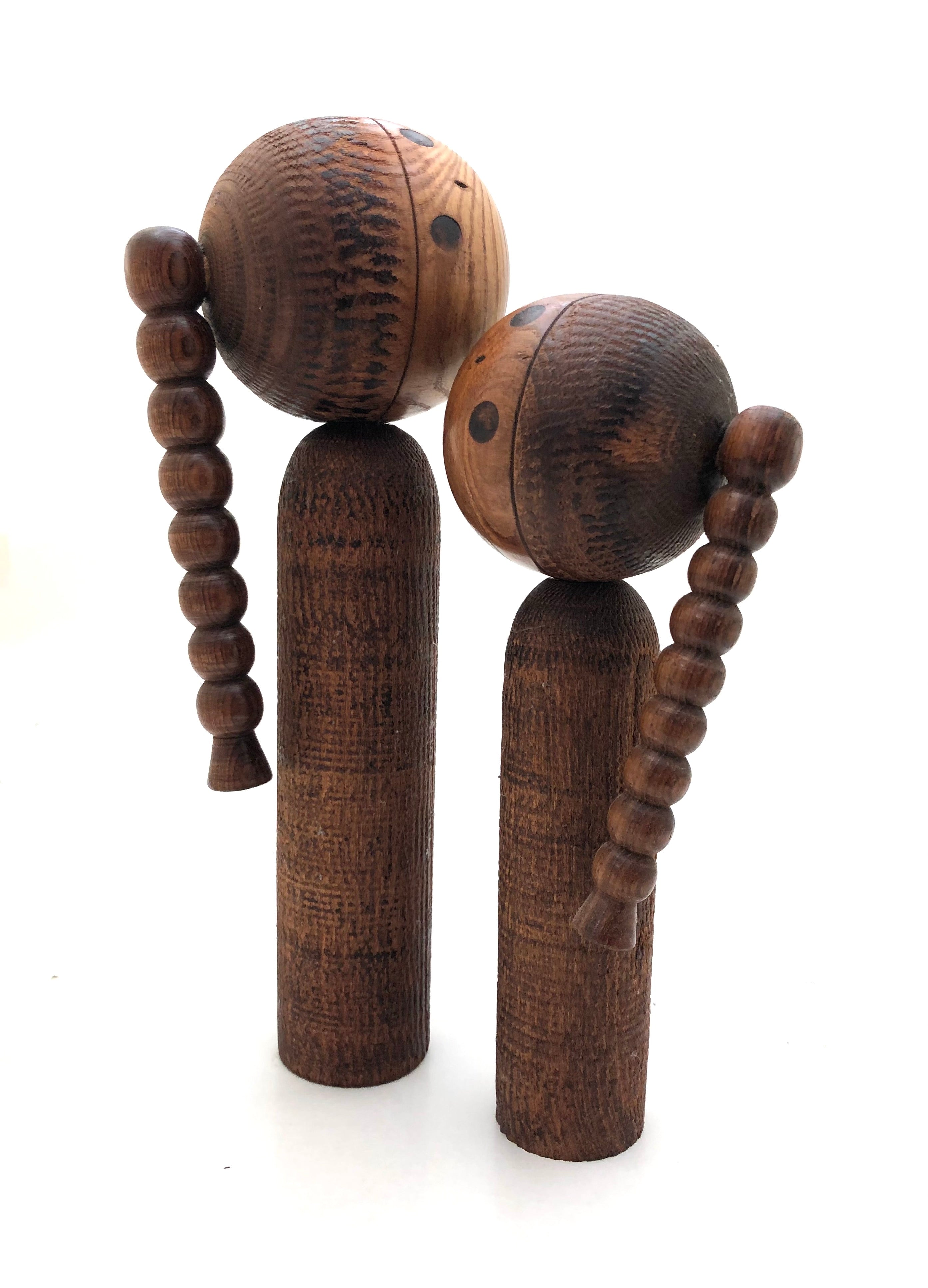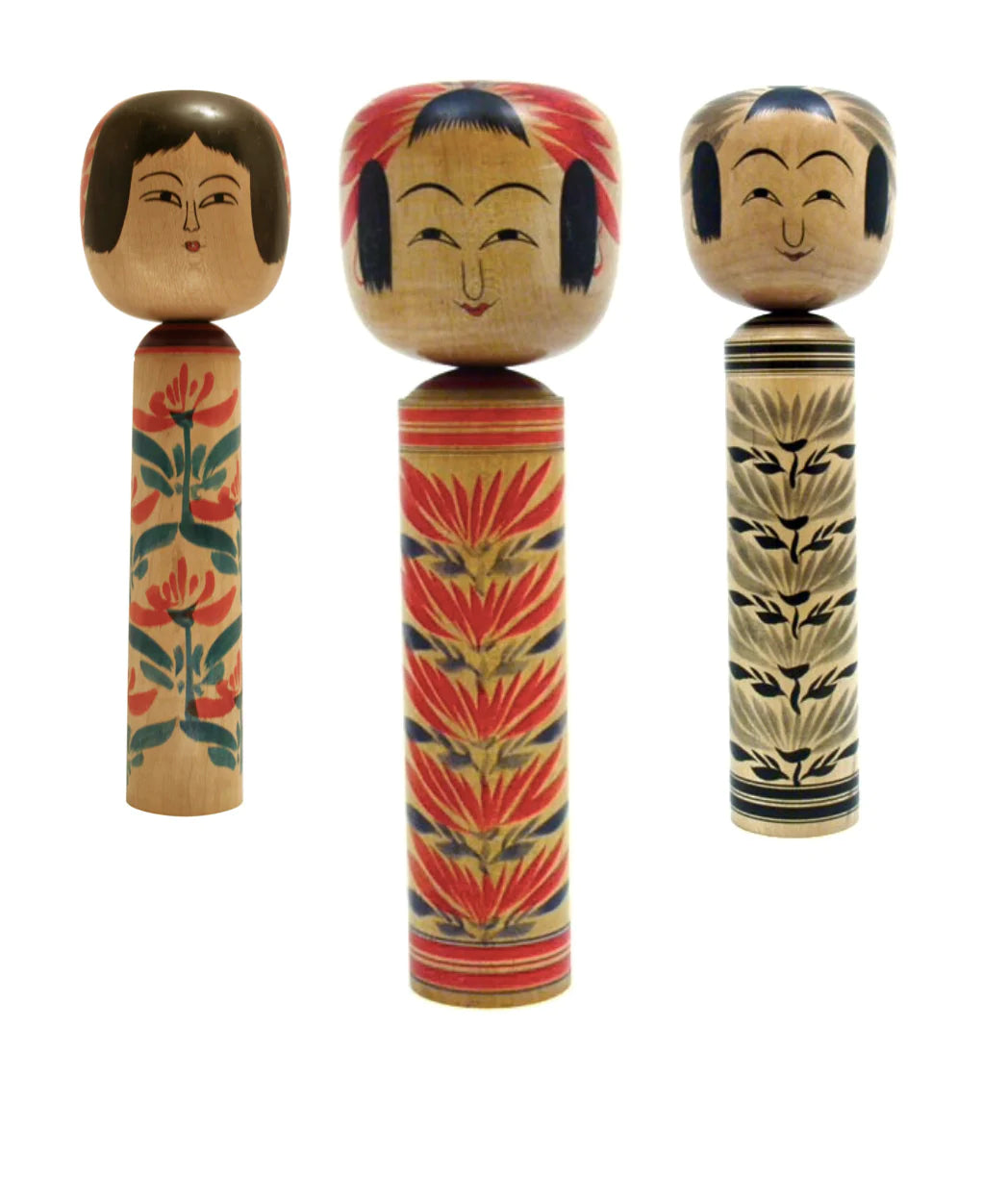

Japanese Antique Portable Bamboo and Walrus Tusk Chopstick Set with Sleeve (Hashi)
Dimensions: Chopsticks - 8-0”l — Sleeve - 5-3/4”l x 5/8”w
Offered is a Rare and Fine Japanese Bamboo and Walrus Tusk Chopstick set that has been hand-formed using bamboo with wonderfully detailed ivory caps reflecting a lotus seed pod. Both chopsticks are a short type, lightweight with two stylized sections. Each is tin and tapered to a cylindrical point. The bamboo slipcase is exceptionally nice, beautifully formed, and delicate to support personal use and carried in a jacket pocket or kimono sleeve. The chopsticks and case are lacquered in a natural finish to protect them from daily use. Bamboo has been used since ancient times for formal and everyday eating utensils and blossomed as an art with the introduction of the tea ceremony.
This personal set is gently used for its’ age and combined with a special material like ivory, is most rare and sought after by collectors, more still, if they’re paired with a crafted case like the ones being offered. Chopsticks are dictated by regional styles within the country and tastes, as well as local customs, and the type of food served in each province.
Condition: Remarkably excellent with minimal aging from climatic changes and use, "as is" with no restoration.
NOTE: Early chopsticks were no more simple than a pair of conveniently styled utensils. The first chopsticks used in Ancient Japan were cooking utensils that were originally made of diverse metals and were purposefully made to be longer, thicker, and oversized in their dimensions when compared to modern chopsticks, so that they could be used to support cooking and keep food preparation safer. Centuries later, chopsticks started being used not just for cooking food, or tending to the fire, but also, for food consumption. Since they made eating easier, safer, cleaner, and faster, most were chiefly made of bamboo, (a plentiful supply of which grows almost all over Japan). Over the succeeding centuries, each Asian country produced these fast bamboo implements having their own distinct styles, sizes, shapes, and materials.
Thanks to preservation efforts, animals and endangered materials, (e.g. e.g. walrus tusk , (grow continuously throughout their lives), ivory, tortoiseshell, and rare woods), are conservatively used today, if not banned altogether. However, we recognize that these materials have been important since ancient times for making a wide range of functional and decorative items. If we feature antique tortoiseshell or rare tree species it is because, while we support conservation, we truly feel that the historical nature and appreciation of historic artifacts should also be preserved and passed down in reverence.
Return Policy
Our antique/vintage pieces are identified/described and professionally photographed, and considered, “as is”, therefore all sales are final. Read our full refund and return policy.


